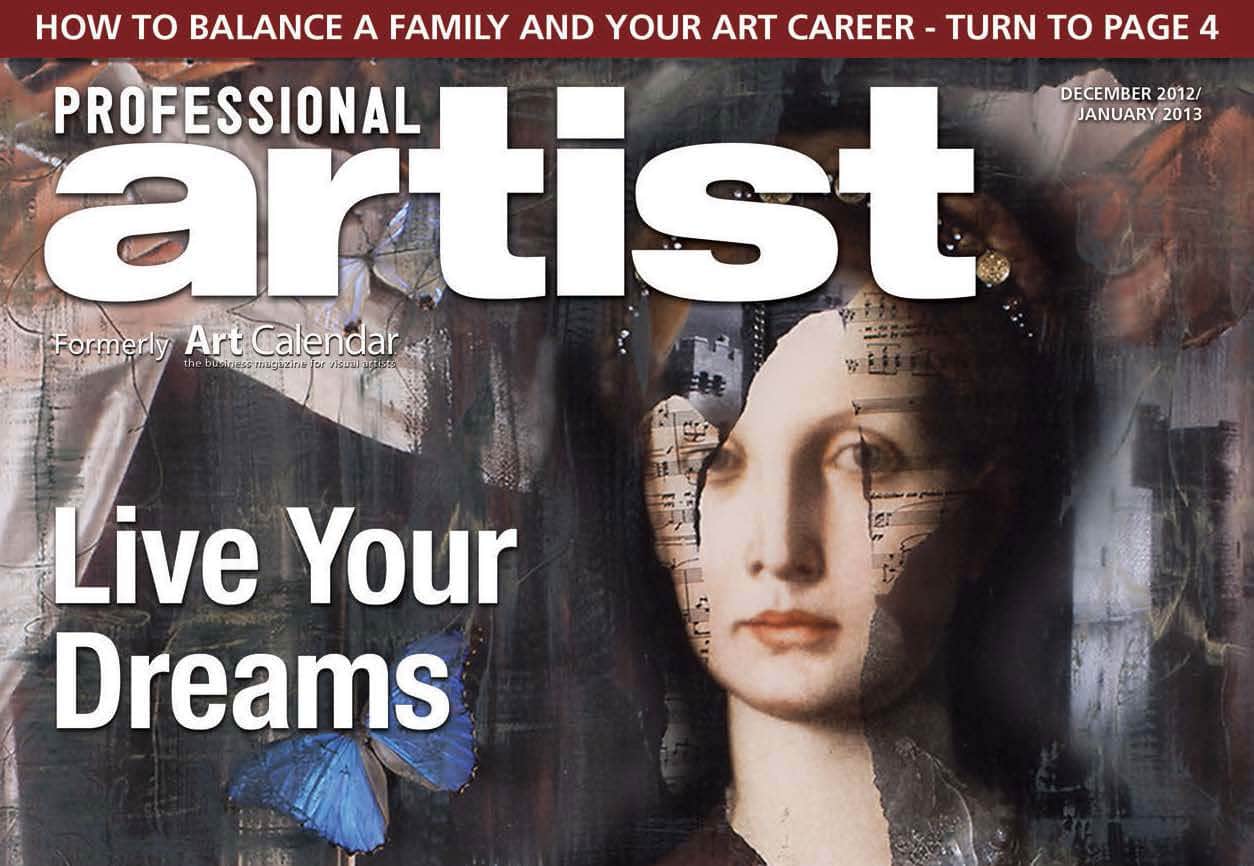Here’s a preview of just a few of the articles appearing in the December/January issue of Professional Artist. Find us at your local bookstore or view the full contents page and purchase the digital edition here.
Planning Your Art Business,
Part 12: Your Estate and Your Art
BY ROBERT REED, PH.D., CFP©
WHEN YOU DIE, the federal government totals up the value of your stuff and taxes you on it. The government calculates the value of your estate (that is, what all your stuff is worth) and then applies an “exclusion amount.” Everything below the exclusion amount is not taxed; anything above is taxed. For 2012, the exclusion amount is $5.12 million. If the total value of your estate is below that, there is no federal estate tax levied at your death. Any amount above $5.12 million is taxed, and your estate has to pay.
As of October 2012, the exclusion amount is scheduled to fall to $1 million on January 1, 2013. (Note: Many states have their own system of estate tax, which have different exclusion amounts.) Now you might say to yourself, “Five million dollars, one million dollars, all my stuff will never add up to that much. The estate tax doesn’t affect me.” But once you start totaling up EVERYTHING your own, the number gets large surprisingly quickly.
Balancing a Family Life and a Creative Life
BY BRENDA HOPE ZAPPITELL
WHEN I DECIDED TO PURSUE MY WORK professionally, I questioned whether or not I could dig deep enough to create the high-quality art needed to pursue a creative career and at the same time proficiently continue my role of wife and mother of three children. In my head, I was convinced that professional artists do not have families, that the intensity necessary to create amazing work required a life of solitude. So many women believe this myth and stay single or postpone having a creative life because of family responsibilities.
Yet others, including myself, have found ways to balance their creative lives with their family lives. I describe this as being driven with discipline. For this article, I asked five successful women artists who exemplify this idea to share their perspectives: Meredith Pardue, Tracy Rocca, Christy Kinard, Ingrid Dee Magidson and Shawna Moore. First, though, I’ll tell you my story.
A Rough Guide to Living the Dream, Part One: The Basic Roadmap
BY ELENA PARASHKO
THE DESIRE TO BECOME a professional artist begins with having a dream. In it, we can easily visualize our ideal creative life. The dream is unique to each individual, and each of us will have a unique set of preferences about where and how we work, the type of artwork produced and the price it commands, the projects and people we are involved with and the opportunities we would like to explore. Turning our dreams into achievable goals takes effort, time, energy, resources and determination. It is a process with recognizable stages: first, allowing ourselves to dream, then verbalizing the details and doing the work required to make the dream a reality. These early stages are then followed by a period of questioning, overcoming any resulting challenges, and finally, living the dream.
Download the digital issue for all of these articles and much more!




